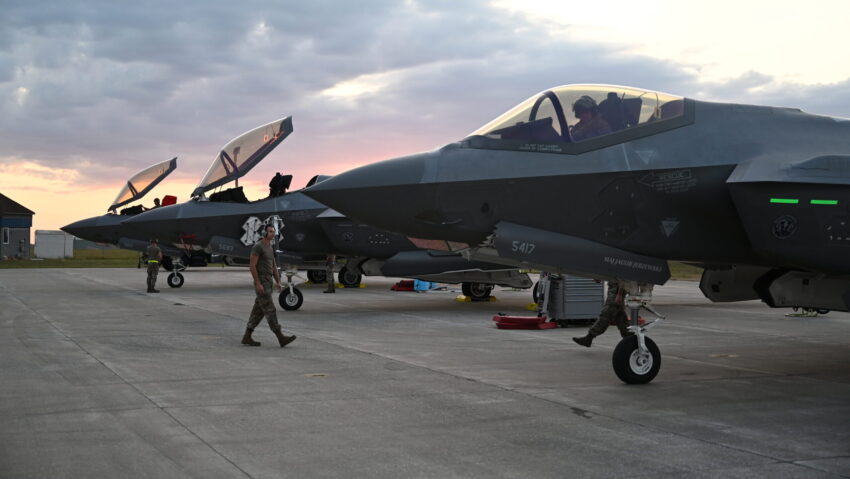Airmen assigned to the Wisconsin Air National Guard’s 115th Fighter Wing complete post-flight inspections on U.S. Air Force F-35A Lightning II aircraft Aug. 13, 2024, during Northern Lightning, an exercise providing realistic combat training for and emphasizing joint asset integration, held annually at Volk Field Air National Guard Base, Wisconsin. The F-35’s adaptability ensures it remains relevant in the face of evolving threats and strategic competition. (U.S. Air National Guard photo by Airman 1st Class Josh Kaeser)
RIAT — NATO members who are not currently F-35 operators have expressed an interest in supporting the maintenance and repair of alliance aircraft in their countries, Michael Williamson, president of Lockheed Martin International, stated Friday at the Royal International Air Tattoo (RIAT).
Speaking to a media roundtable, Williamson described discussions at the recent NATO Summit at The Hague, Netherlands, where he said certain undisclosed countries “making the decision not to buy F-35 had approached [Lockheed Martin] to build facilities and repair parts so another F-35 can land at their air bases, be repaired, and fly out.”
Such a move could improve resiliency, interoperability and interchangeability across the NATO alliance, Williamson said.
Williamson also described exercises where F-35 aircraft from one NATO country was successfully “passing information” to another nation’s command post on the ground, another sign of increased levels in interoperability across the alliance.
“If we can get 32 NATO countries with that kind of interoperability to pass information from air to ground and to command posts, that epitomizes interoperability,” he stated, highlighting how Lockheed Martin’s Sniper pod could also allow fourth-generation fighters to communicate with F-35 in the sky.
“We’ve run tests where information from the F-35 can go directly to an F-16 with a Sniper pod,” he said.
Outside of the F-35, Williamson took the opportunity to run through some of Lockheed’s priorities for Europe.
He emphasized diversifying and investing in manufacturing facilities and the importance of leveraging commercial technologies, particularly in the areas of cyber, communications and software companies which traditionally work “much quicker” than defense.
Highlighting demand for “more equipment and quicker” at the NATO Summit and Paris Air Show in June, Williamson described another focus area of Lockheed Martin to move beyond just partnering with “great companies at the prime level” and instead investing in suppliers across multiple lines.
“We have built a series of placemats in 70 countries, gone into all of them and sent management to get an understanding of capabilities. Not all of them are in the aerospace and defense business but we can bring good companies in which adds to diversification and resilience,” he said.
RELATED: Europe is pouring money into defense. Can US firms reap the reward amid trans-Atlantic tension?
“That investment also helps in education for new technology, which builds skills and resilience.”
Williamson also highlighted increasing production of PAC-3 missiles for the Patriot air defense system.
“For Patriot, we have not quite doubled production [but] gone over a one-third increase in production. Some key components we have found quite challenging but we are making investments in facilities for those components so we can double capacity.”
Williamson wrapped up by stating the international market accounts for 40 percent of Lockheed Martin’s growth, but warned the company and the wider defense industrial base “cannot continue to operate as they have in the past.”
“It took three to four years to work out a requirement; four years working on it; and four to five years to build prototypes. And then a long production run of thousands of products. Our view in the 21st century is we can’t do that,” he concluded.
Click this link for the original source of this article.
Author: Andrew White
This content is courtesy of, and owned and copyrighted by, https://breakingdefense.com and its author. This content is made available by use of the public RSS feed offered by the host site and is used for educational purposes only. If you are the author or represent the host site and would like this content removed now and in the future, please contact USSANews.com using the email address in the Contact page found in the website menu.








